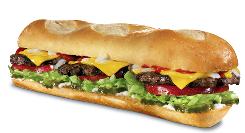 “Tear Down this Wall” has become a famous quote by former president Ronald Reagan when urging the then Soviet Union to take down the Berlin Wall to symbolize increasing freedom. And, so with lesson #1 of “The Course in Weight Loss,” we are asked to tear down our own symbolic walls of suffering and false perceptions that are preventing us from experiencing life and relationships to their fullest.
“Tear Down this Wall” has become a famous quote by former president Ronald Reagan when urging the then Soviet Union to take down the Berlin Wall to symbolize increasing freedom. And, so with lesson #1 of “The Course in Weight Loss,” we are asked to tear down our own symbolic walls of suffering and false perceptions that are preventing us from experiencing life and relationships to their fullest.
While running the Berlin Marathon this past year, I remember pausing as I ran under the Brandenburg Gate to imagine just how an East German might have felt when they were first allowed to cross under these very gates to the West. I am sure I cannot truly comprehend, but I suppose they felt as if a weight had been lifted. As if a brand new world, literally and figuratively, had opened up for them. I got chills the moment that I crossed under those gates.
While there was much heartache and suffering that lead up to the tearing down of the Berlin Wall, breaking a physical wall made of bricks is actually much easier than tearing down the emotional wall that we have created for ourselves. Each brick in our own wall represents some facet of our suffering that we have yet to release. For some, this wall manifests itself as a wall of fat shielding the sufferer from the world and people around them. We console and feed our suffering with food and excess….we cannot deal with our anger or fear and instead we try to eat our anger and fear. While I may not be overweght, I still have a wall that needs some tearing down to be totally free from the power that I give food and weight.
“A Course in Weight Loss” presents us with words that represent the bricks of our wall. We are asked to reflect on each “brick” and contemplate whether it pertains to us. The words representing these bricks are as follows.
- shame
- injustice
- anger
- protection
- fear
- pride
- unforgiveness
- selfishness
- judgment
- jealousy
- disdain
- greed
- excess responsibility
- laziness
- pressure
- dishonesty
- exhaustion
- arrogance
- burden
- inferiority
- stress
- embarrassment
- heartbreak
- self-abnegation
Yep, that’s it. LOL! It’s enough to last me a lifetime. I am positive I will come back to this again and again. All of these bricks evoked some thoughts for me, but the heaviest bricks at this time in my life are those of selfishness, judgement, pressure, and arrogance.
Selfishness. I grew up as basically an only child, I believe I became selfish because I didn’t have to share with anyone. As an adult, I still carry the need to have things my way, on my terms, when I want, etc. And, in doing so, I sometimes disregard the wants and needs of others. I have been working on this with my husband so that even if I don’t want to do something he does, I still go and do it because he enjoys it. It made me wonder the reason that I cannot have peace in seeing another joyful? Or the reason that it is so hard for me to do what others want to do? I think some is that I feel I’m wasting my time, but in my experience, even doing exactly what I want does not make me happy. I commit to opening myself up to those around me and experiencing what they enjoy or at least watching them enjoy it.
Judgement. That’s an ugly one. I believe that being so critical of myself has manifested itself in being critical of others. After contemplating this oh so heavy brick, I believe by reserving judgement of others I may begin to experience a loving and nonjudgemental attitude of myself. I am certainly still working on this one.
Pressure. I, no doubt, create this brick for myself. It’s my need to please and to not dissapoint that creates my pressure. I feel that I shouldn’t make mistakes in my job, at derby, at home, with my friends and with my weight. I put pressure on myself to try to be everything, but I end up failing and just fulfilling my own prophecy that I am never enough and am dissappointing. I need to allow gentleness to come into my heart. I am only 1 person. I can only do what I can do. I have realized over the last few years that I have a very hard time asking for help. It makes me feel that I failed, I should be able to do it on my own, it makes me weak…all of this is not literally true, its my perception. This year, I am going to reach out to a willing hand, a listening ear, an open heart.
Arrogance. For me, arrogance is just a branch of judgement. I really do not have much confidence in myself. So, I think my actions of arrogance are a facade of confidence….to let others think I am confident when I am really not. The arrogance comes off in downgrading others to make myself look better. This is not healthy for that person or myself. This year, I am going to be conscious of others’ successes and allow them to relish in their success without making them unworthy in my mind.
This wall wasn’t built in a day and it certainly is not going to be destroyed in a day. But, day by day, I will work on these bricks that give me a heavy heart and emotional shield. I will definitely still need to revisit lesson #1 time and again and again. I appreciate those that are still here with me as you read this long post. I am hoping that it provokes some thought for your own growth and provides you with the means to break down your own wall, brick by brick.





